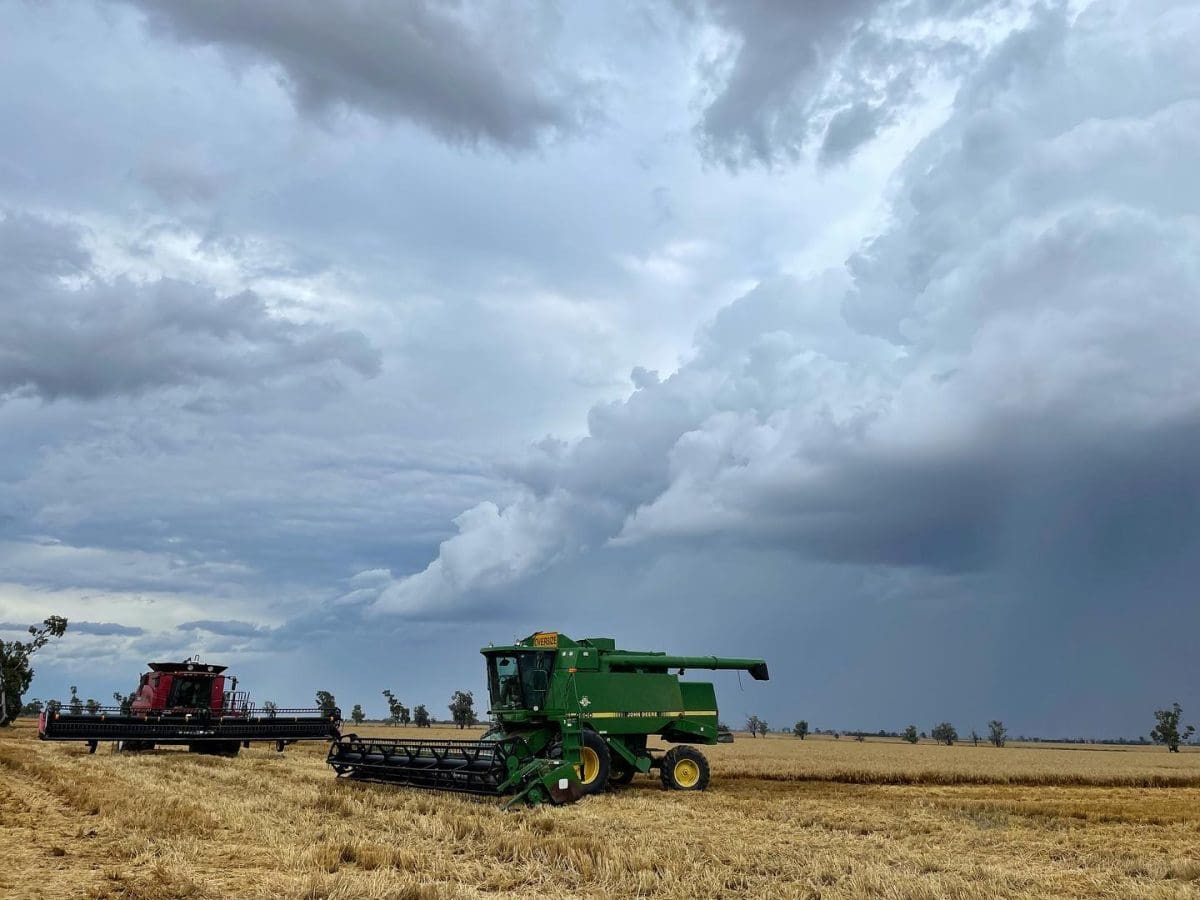
Rain caught the majority of the NSW wheat harvest in late 2021 and caused widespread downgrading. Photo: Kim Storey
INTERNATIONAL feedgrain buyers are receiving expert advice on how to incorporate sprouted wheat into animal rations, following a wet Australian harvest in some areas resulting in sprouted crops.
In a statement, Australian Export Grains Innovation Centre (AEGIC) CEO Richard Simonaitis said AEGIC quickly moved to support Australian grain traders and international customers with technical information on the use of sprouted wheat for animal feed.
“Sprouted wheat is actually equivalent to non-sprouted wheat in nutritional value for animal feed, unless the sprouting is extensive,” Mr Simonaitis said.
“In most cases, sprouted wheat can be used freely as a feed component as long as all the standard quality parameters are in place.
“The Australian industry is doing everything possible to find a home for the downgraded wheat available this season to preserve some value for growers.”
Mr Simonaitis said AEGIC has rapidly developed technical information packages to support the trade and use of sprouted wheat from the current season, in consultation with the Australian grain trade.
Developed by Australian animal feed nutrition experts, the packages provide evidence on the suitability of sprouted wheat and practical advice on how to use it for animal feed.
AEGIC is currently presenting this information via webinars to grain customers in markets including China, Vietnam, Thailand, Philippines and Indonesia.
AEGIC is an investment of the Australian Government through the Grains Research and Development Corporation and the Western Australian Government’s Department of Primary Industries and Regional Development.
According to ABARES, Australia’s 2021-22 wheat crop was a record at 34.4 million tonnes (Mt), and USDA estimates Australia will export a 25.5Mt of it.
The 11.7Mt WA wheat crop and the 1.8Mt Queensland crop were mostly harvested in good to ideal conditions, but at least half of the 12.2Mt NSW crop is believed to have some degree of sprouting caused by rain at harvest.
Victoria’s 4Mt wheat crop largely escaped downgrading, but part of SA’s 4.6Mt crop had some downgrading due to rain at harvest.
Traders have told Grain Central that a falling number of below 300 seconds, an indicator of sprouting, has knocked rain-affected samples out of sound grades.
However, test weights exceeding 70 kilograms per hectolitre and protein of more than 10 or 11 per cent is common in downgraded wheat, most of which has been segregated as SFW.
It is in solid demand from the domestic stockfeed sector as an alternative to barley, and is already leaving the country in containers and bulk, primarily for Southeast Asian markets.

HAVE YOUR SAY